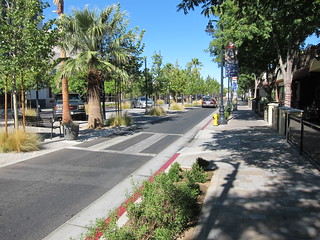 We have had a lot to be thankful for recently, excepting the lasting and tragic human impact of hurricane Sandy.
We have had a lot to be thankful for recently, excepting the lasting and tragic human impact of hurricane Sandy.
Resource Library
 It has been a productive year for the Safe Routes Partnership in Southern California. This year, the Southern California team was off and running with a full-blown campaign at the Southern California Association of Governments (SCAG) to increase funding for active transportation in the 2012 Regional Transportation Plan and Sustainable Communities Strategy (RTP/SCS).
It has been a productive year for the Safe Routes Partnership in Southern California. This year, the Southern California team was off and running with a full-blown campaign at the Southern California Association of Governments (SCAG) to increase funding for active transportation in the 2012 Regional Transportation Plan and Sustainable Communities Strategy (RTP/SCS).
ChangeLab Solutions has developed two complementary guides to help policymakers, advocates, and stakeholders consider the effects of attendance-based funding.
 Moments ago I finished facilitating a webinar on regional approaches to Safe Routes to School through Metropolitan Planning Organizations (MPOS). The jargon involved even when clearly presenting on this topic would send even the most hardened Safe Routes to School practitioner running in the other direction. Yet, this is the point.
Moments ago I finished facilitating a webinar on regional approaches to Safe Routes to School through Metropolitan Planning Organizations (MPOS). The jargon involved even when clearly presenting on this topic would send even the most hardened Safe Routes to School practitioner running in the other direction. Yet, this is the point.
 In the past, community churches have typically served as places of worship. These institutions have been sustained by providing valuable contributions to communities in the areas of direct economic contributions, social services and community volunteering and education. This highlights the expanded role of the church from the ch
In the past, community churches have typically served as places of worship. These institutions have been sustained by providing valuable contributions to communities in the areas of direct economic contributions, social services and community volunteering and education. This highlights the expanded role of the church from the ch
This document provides a full copy of the Safe, Accountable, Flexible, Efficient Transportation Equity Act. (SAFE-TEA)
This document summarizes goals and performance measures for MAP-21.
 We have all been waiting to learn how the new federal transportation bill, Moving Ahead for Progress in the 21st Century, or MAP-21, will be implemented. The new Transportation Alternatives Program (TAP) is of particular interest since it now includes Safe Routes to School and Transportation Enhancements funding.
We have all been waiting to learn how the new federal transportation bill, Moving Ahead for Progress in the 21st Century, or MAP-21, will be implemented. The new Transportation Alternatives Program (TAP) is of particular interest since it now includes Safe Routes to School and Transportation Enhancements funding.
This book provides government officials, transportation decisionmakers, planning board members, and transportation service providers with an overview of transportation planning. It contains a basic understanding of key concepts in statewide and metropolitan transportation planning, along with references for additional information.
 Leah Murphy is a currently a Master's Student at the University of California Los Angeles.
Leah Murphy is a currently a Master's Student at the University of California Los Angeles.
A comprehensive school physical activity program (CSPAP) can ensure that students achieve the recommended amounts of daily physical activity by providingopportunities for physical activity before, during and after the school day. This resource describes components of a CSPAP.

Schools play a central role in providing opportunities for students to engage in physical activity. Physical education (P.E) is the one time during the day when all students can be active. School boards can consider policy and curriculum strategies to support increased physical activity in P.E.
 Less than a month ago, President Obama announced that his choice for the next US Secretary of Transportation was Anthony Foxx, the mayor of Charlotte, NC. Based on his work in Charlotte and his remarks about transportation, we are hopeful about his potential to carry forward Secretary LaHood’s leadership on bicycling, walking and Safe Routes to School.
Less than a month ago, President Obama announced that his choice for the next US Secretary of Transportation was Anthony Foxx, the mayor of Charlotte, NC. Based on his work in Charlotte and his remarks about transportation, we are hopeful about his potential to carry forward Secretary LaHood’s leadership on bicycling, walking and Safe Routes to School.
This resource outlines the roles and responsibilities of school board members regarding school healthand student wellness.

This report serves as an educational piece for Congressional members on the progress of Safe Routes to School. The report includes an executive summary, successes of the federal SRTS program, lessons learned, challenges, funding information, and recommendations for the future of SRTS.

 This blog post was written by Mikaela Randolph, shared use campaign manager, and Keith Benjamin, street scale campaign manager.
This blog post was written by Mikaela Randolph, shared use campaign manager, and Keith Benjamin, street scale campaign manager.
This resource provides school board members with information on local wellness and physical activity resources, sample policies, case studies and fact sheets.

